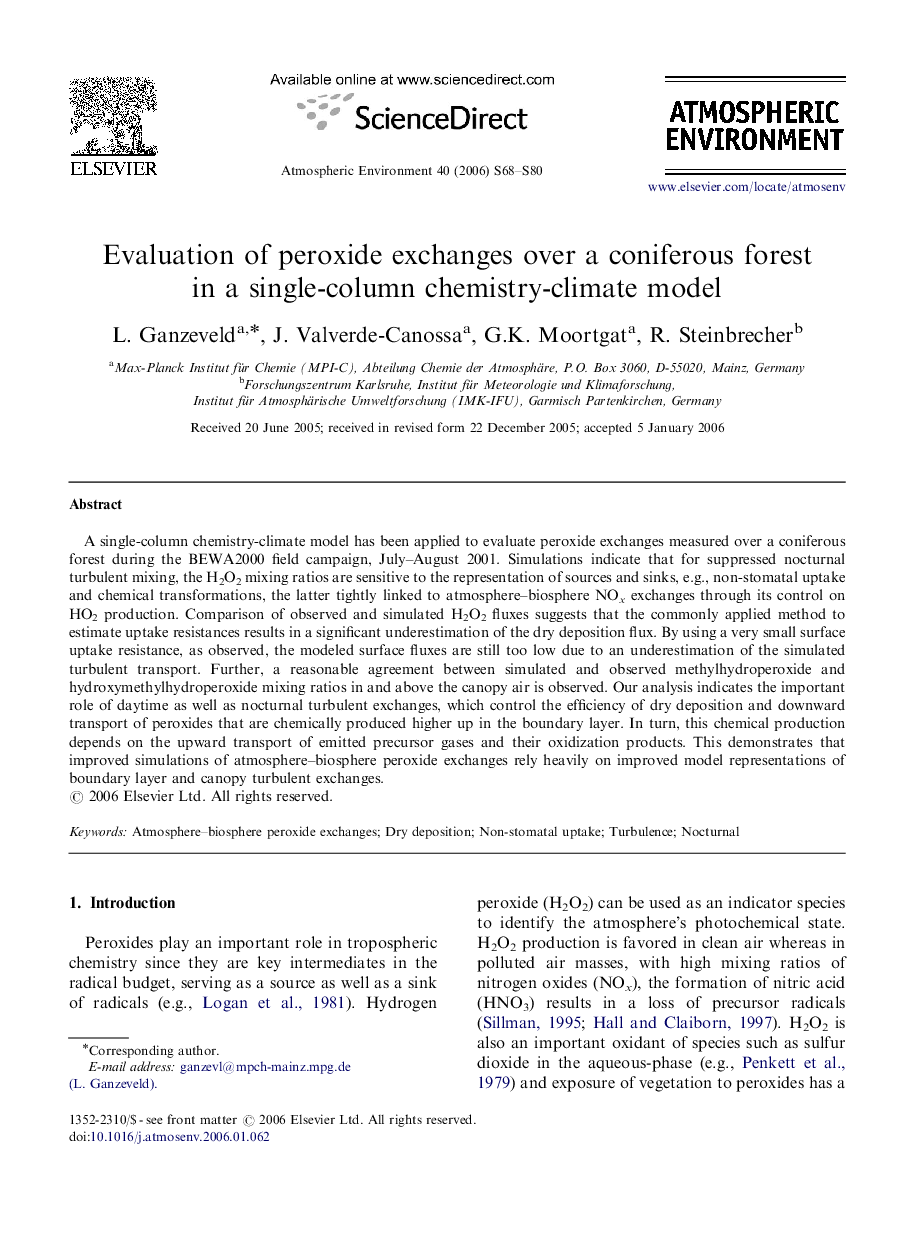| Article ID | Journal | Published Year | Pages | File Type |
|---|---|---|---|---|
| 4443892 | Atmospheric Environment | 2006 | 13 Pages |
A single-column chemistry-climate model has been applied to evaluate peroxide exchanges measured over a coniferous forest during the BEWA2000 field campaign, July–August 2001. Simulations indicate that for suppressed nocturnal turbulent mixing, the H2O2 mixing ratios are sensitive to the representation of sources and sinks, e.g., non-stomatal uptake and chemical transformations, the latter tightly linked to atmosphere–biosphere NOx exchanges through its control on HO2 production. Comparison of observed and simulated H2O2 fluxes suggests that the commonly applied method to estimate uptake resistances results in a significant underestimation of the dry deposition flux. By using a very small surface uptake resistance, as observed, the modeled surface fluxes are still too low due to an underestimation of the simulated turbulent transport. Further, a reasonable agreement between simulated and observed methylhydroperoxide and hydroxymethylhydroperoxide mixing ratios in and above the canopy air is observed. Our analysis indicates the important role of daytime as well as nocturnal turbulent exchanges, which control the efficiency of dry deposition and downward transport of peroxides that are chemically produced higher up in the boundary layer. In turn, this chemical production depends on the upward transport of emitted precursor gases and their oxidization products. This demonstrates that improved simulations of atmosphere–biosphere peroxide exchanges rely heavily on improved model representations of boundary layer and canopy turbulent exchanges.
